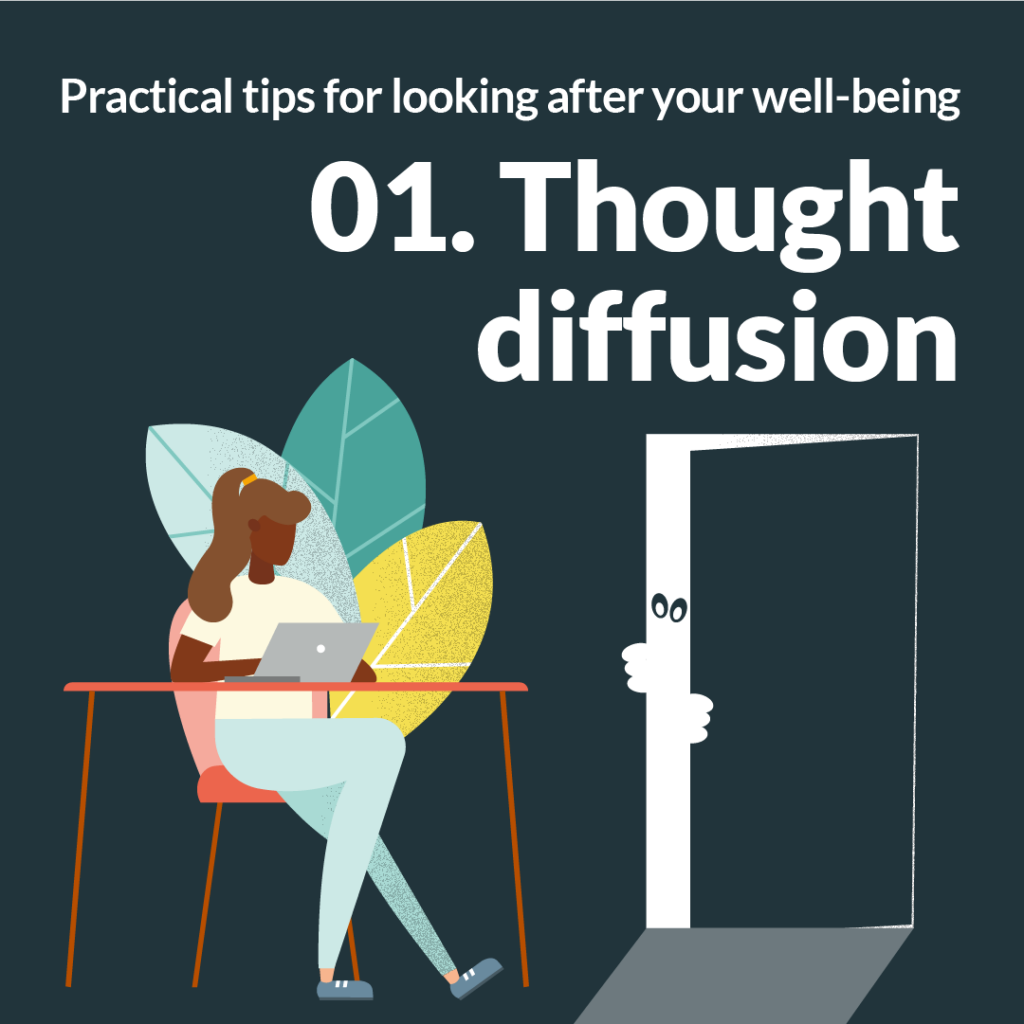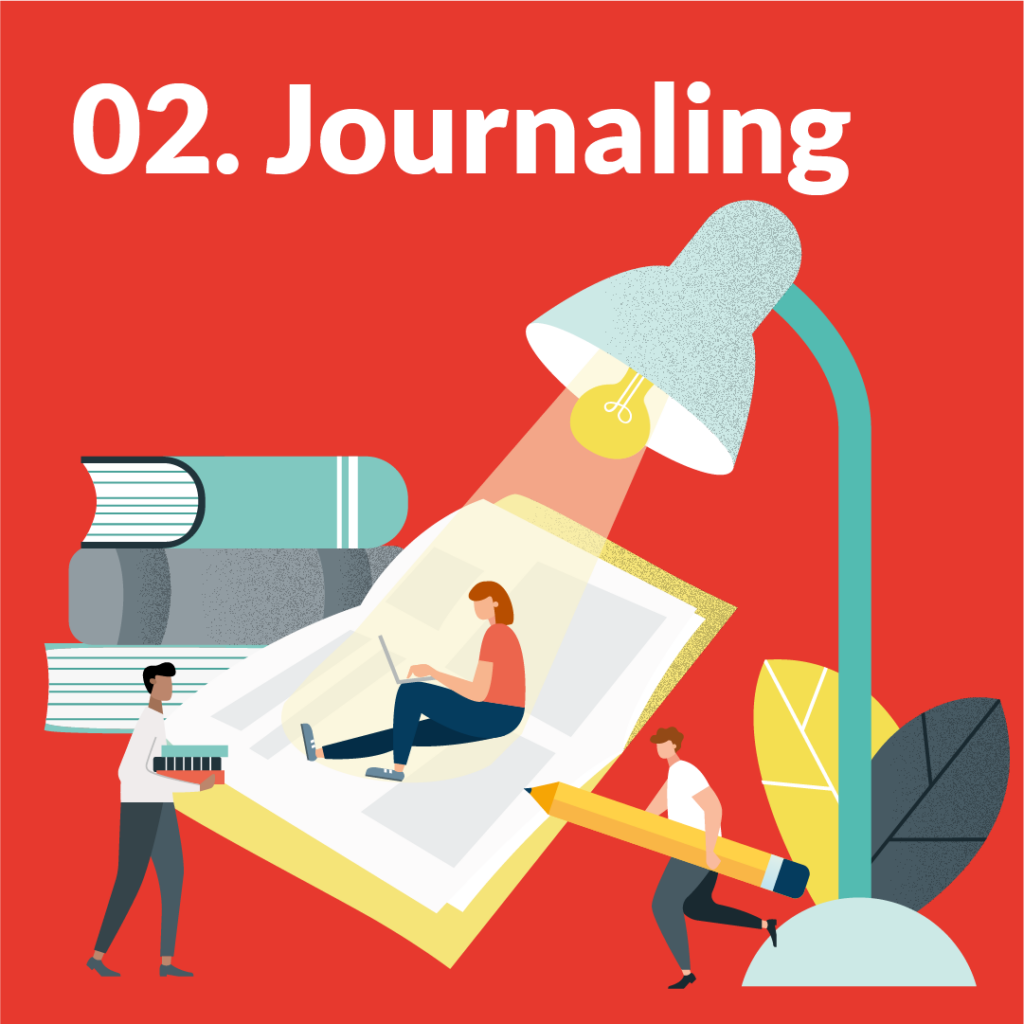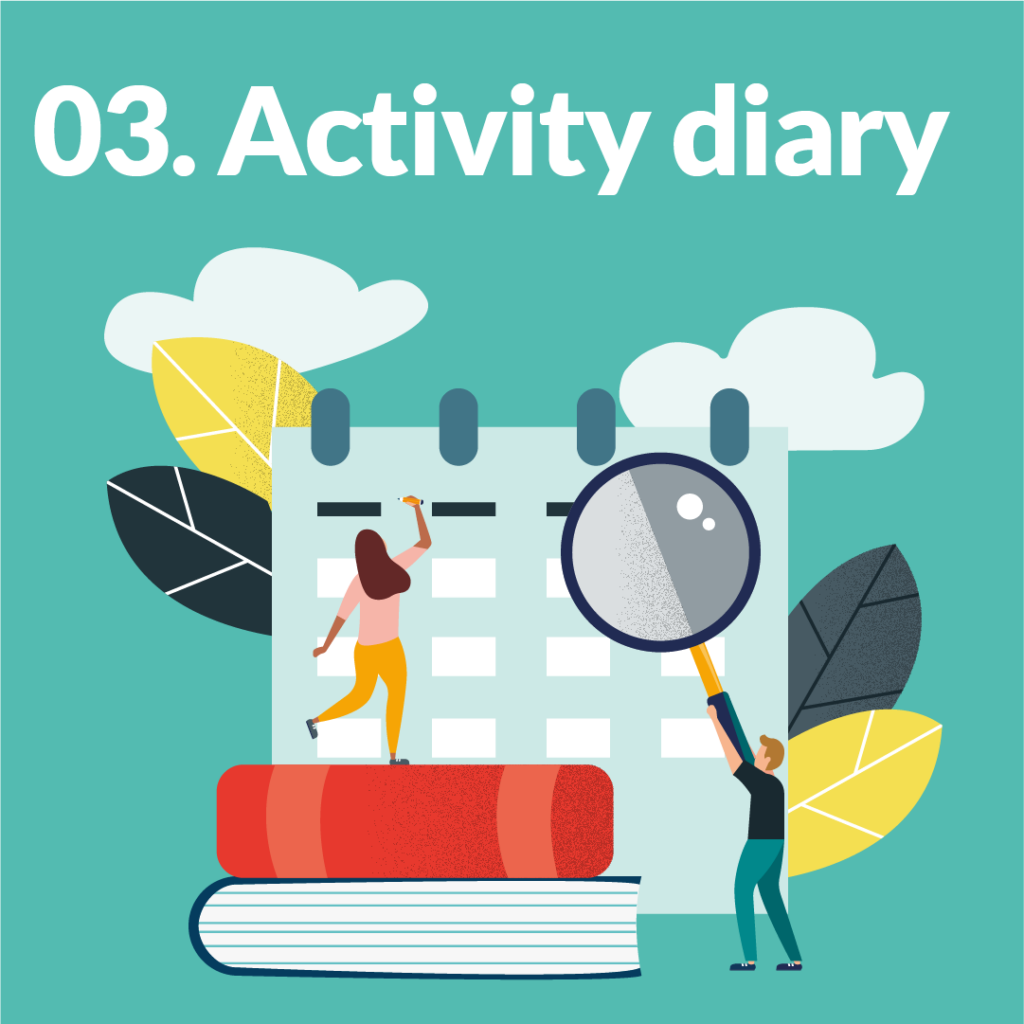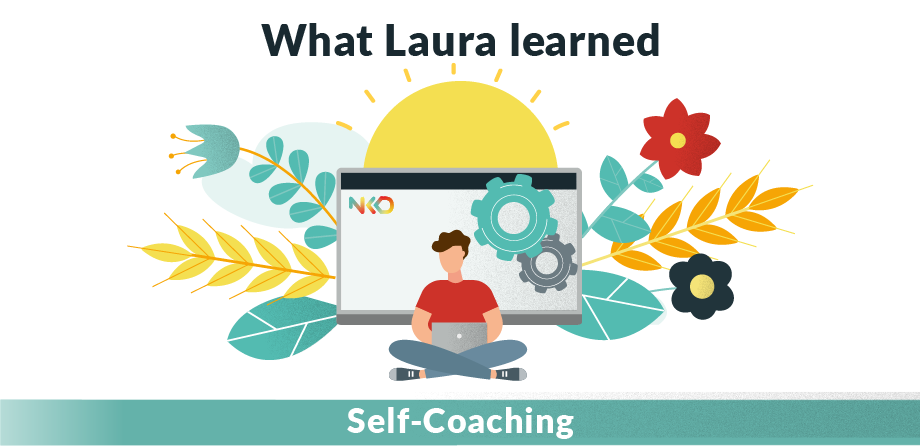Employee Wellbeing: Self-Coaching
Practical tips for looking after your wellbeing
Throughout November, team NKD are focusing on our wellbeing through a series of sessions we’re calling Me-vember! Last week’s was all about self-coaching, with NKD associate Hilary Coldicott taking us through some practical tips to help us look after our wellbeing.
Hilary explained that self-coaching is a personal process, therefore we would be going through 3 different methods as some would resonate with us more strongly than others. The three different methods were: thought diffusion, journaling and an activity diary.
After covering some top tips about ego and self-talk, the first method we covered was thought diffusion…

This was something totally new to me! This is all about getting distance from the negative voice in our head and recognising it’s just that – a voice!
We started this process by creating a negative character for an unhelpful voice we might have… this helps separate the negative voice from our own voice and realise it’s not actually us speaking. It could be, a Moaning Minnie, or a critical teacher, or anything that works for you. I went for a ‘Perfect Pete’ character – for whom perfection comes easy, and can’t understand why you’d struggle!
We worked on giving our characters a personality: what did they sound like and what are they saying? What do they look like and what are they wearing?
Then, we worked on making this character less and less scary or influential. We tried out different ways of doing this, from putting them in clothes that don’t fit, to making them speak like Donald Duck, to shrinking them until you can fit them on a pin head!
To combat our negative character, we created a positive character and thought about what this positive character would say to your negative character, what do they would want us to focus on and how the two interact?
What started out as a process which I found quite uncomfortable and out of the ordinary, ended up being quite fun and free-ing! It definitely made me feel like some of the negative self-talk I can tell myself (or what Perfect Pete tells me!) can be quite ridiculous. It was a fun process which definitely helped to get distance from our negative self-talk.
The next technique was journaling…
We turned off our cameras and spent 2-5 minutes writing whatever came to mind. It was quite surprising how easy this was. What started as a daunting blank piece of paper was filled very quickly!

Journaling creates a safe space for all of our feelings and emotions, I think a lot of us were surprised at what we’d written down at the end of the session.
I found it was a really cathartic process to start working through my own thoughts and as a place to manage others’ responses. Hilary described it as a place to ‘speak the unspeakable’, thinking about it this way was really liberating – it was definitely surprising how 5 minutes can create such an instant effect. Within the nonsense I’d scribbled down were definite gems of wisdom too; As Hilary described it, ‘the rough stuff + the good stuff = the right stuff’.
We learnt that regular journaling actually reduces stress hormones, boosts immunity and regulates emotions! It’s definitely something I’ll try again – especially if I’m working through a tricky situation.
Finally, we practised creating an activity diary…
An activity diary is a very granular diary of your week. You note down everything from waking up, making a cuppa and even going to the loo! You break your day up into morning, midday and evening and rate your mood during that activity on a scale of 1-10.

We created an activity diary for the last day or two. Even though we only had a very small data pool to go off, it was so insightful. We looked at our diaries and asked ourselves some questions such as:
- Where are the highs and lows?
- What do you need to stop doing?
- What patterns do you see?
There were more questions but the two which proved really insightful for me were, ‘If this was someone else’s week, what would you think about it?’ And, ‘How would you expect someone to be feeling if they were living this way?’. This method was a really simple but such an effective way to look at our day-to-day lives and routines with some distance to make changes which can massively affect our wellbeing.
There were more questions but the two which proved really insightful for me were, ‘If this was someone else’s week, what would you think about it?’ And, ‘How would you expect someone to be feeling if they were living this way?’. This method was a really simple but such an effective way to look at our day-to-day lives and routines with some distance to make changes which can massively affect our wellbeing.
It’s so easy to get stuck into the same routines and go through your day without reflecting on why we feel the way we do. This means we often miss opportunities to make small changes which can have a big effect on our mood. This was my favourite method and one I’ll definitely be using again.
If you’d like to learn more about any of these methods, reach out to Hilary here: hilary@coldicott.co.uk
We would love to know if you try out any of these self-coaching methods! If you do hit the connect button and let us know how you get on. Check out last week’s Me-vember blog here.
